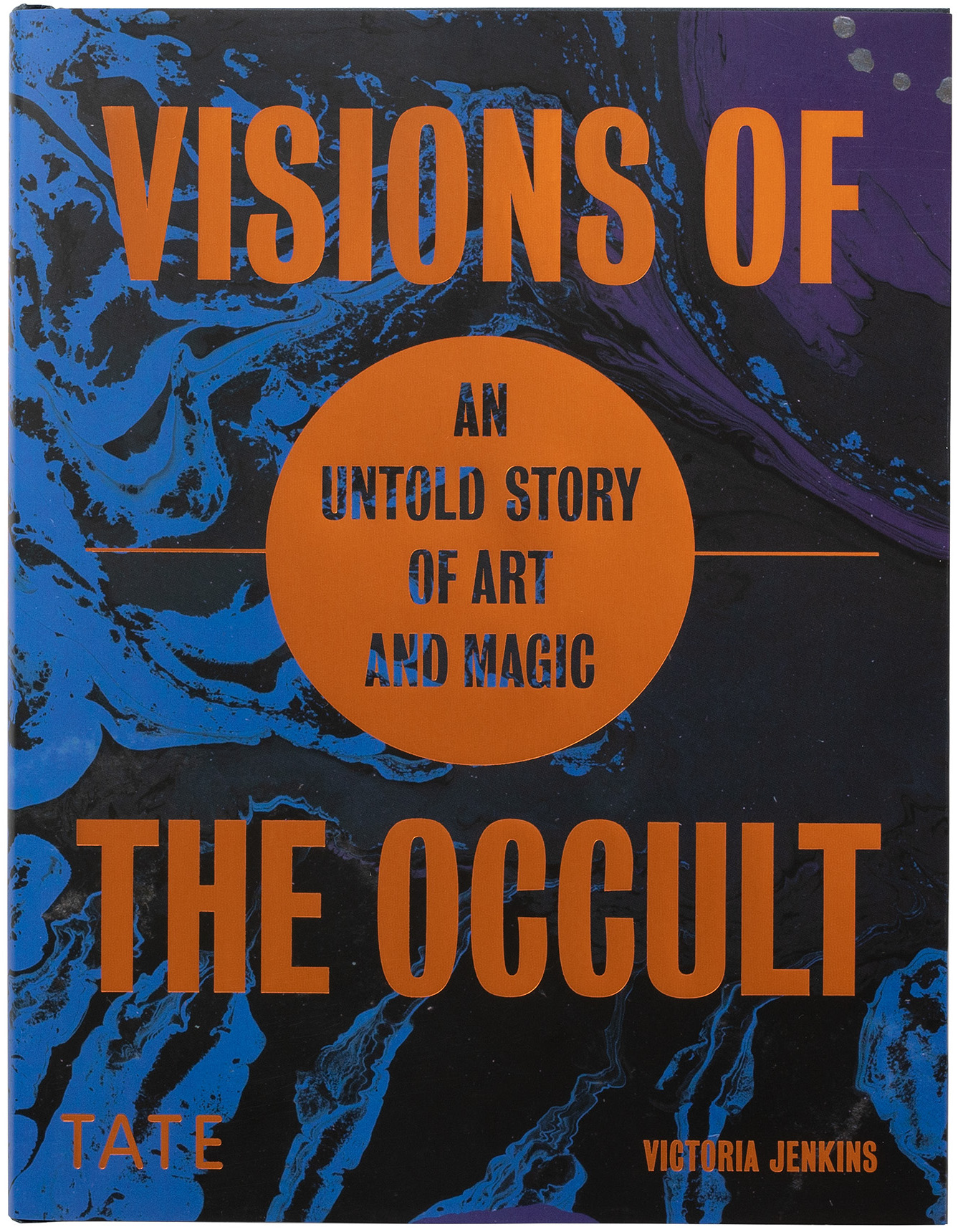Visions of the Occult was written by archivist Victoria Jenkins to showcase works from the Tate's collections. Interest in the influence of the occult on modern art has grown exponentially in the past ten or fifteen years; by some accounts it was the Tate exhibition and catalog The Dark Monarch: Magic and Modernism (2009) that not only ignited enthusiasm for this subject but brought about a veritable sea-change in the way the story of modern art is told. While the Tate is owed significant credit for redirecting public discourse away from the evolution of styles forming the core of art history survey courses, the realization that the "occult" and all that that word implies, has had a profound influence on artists is not new to the historians who design and teach those very same courses. Numerous authors, such as Fred Gettings, who wrote Visions of the Occult: A Visual Panorama of the Worlds of Magic, Divination and the Occult (Rider 1987), have likewise long enjoyed a vantage point with more complex perspectives than are afforded in the average introductory class. The prices asked for used copies of some of these books—even the relatively recent The Dark Monarch is currently listed at $800 and up—are somewhat meaningless indications of value if the titles are so lost to recent memory that they can be appropriated and recycled. Or perhaps that is the wrong way to look at it; after all, anyone googling Visions of the Occult just might come across Getting's book in the process. Likewise, "An Untold Story" might call up references to Pamela Colman Smith: The Untold Story (U.S. Games, 2018) by Stuart R. Kaplan, Mary K. Greer, Elizabeth Foley O'Connor, and Melinda Boyd, which showcases the phenomenal talent of the artist behind the world's most famous Tarot deck.
Such musing aside, at least some of the numerous recent publications about art and the occult are a delight to many scholars, professionals, and enthusiasts. Jenkins's Visions of the Occult in particular is a wonderful demonstration of what a good writer with a talent for recognizing patterns beyond those of the look-alike aspects of formal styles can do. Indeed, the sigils placed alongside the chapter headings on the title page are tantalizing indicators of what awaits in the pages beyond. In the first chapter alone, Jenkins successfully connects science, fireworks and gunpowder, the pyramids, and a certain infamous urinal with alchemy by way of subject, materials, and concept. Similar narratives are found in the other chapters: Witchcraft, Spirits, Divination, Tarot, Magic Stones, Secret Orders, Unseen Energies, and The New Age, some of which also have specialized "In Focus" pages. For instance, the chapter on witchcraft concludes with an In Focus page on "A Witch's Familiar" illustrated with a cut-out and collage of cats by Ithell Colquhoun, and another on "The Altar" illustrated with works by Meredith Frampton and Betye Saar.
It's not entirely clear if all of the included artists ever intended to be participants in the Visions of the Occult story. That some may have been appropriated to that role is most apparent in the Tarot chapter, where each of the trump cards is presented by way of a work of art. The text provides brief summaries of the upright and reversed card meanings and a short commentary on the associated art but no references to the artist's intentions. However, women artists with established interests in the occult, such as Eileen Agar, Leonora Carrington, Leonor Fini, Barbara Hepworth, and Pamela Colman Smith, are well represented throughout all chapters. Not surprisingly, Colquhoun is the most visible: her works appear on pages 38, 42, 48 (2), 50, 58, 83, 107, 111, 114, 130, 132, 140, and 142.
Visions of the Occult offers many more reproductions of paintings, sculptures, drawings, photographs, mixed media productions, books, and other objects—there is at least one on most of the book's 176 pages—as well as a glossary (written with the general public in mind), a picture credit list, and an index suited to the book with entries for both artists and authors. It lacks a bibliography or reading list, but it does have a number of intriguing endnotes. Chapter by chapter or all together, Jenkins unites a great diversity of materials with informative prose that is unlikely to either discourage amateurs or bore specialists.
Recommended.
~review by Emily E. Auger
Author: Victoria Jenkins
Tate Publishing, 2022
35 US$
Visions of the Occult: An Untold Story of Art and Magic

©
2010 - 2025
Facing North
